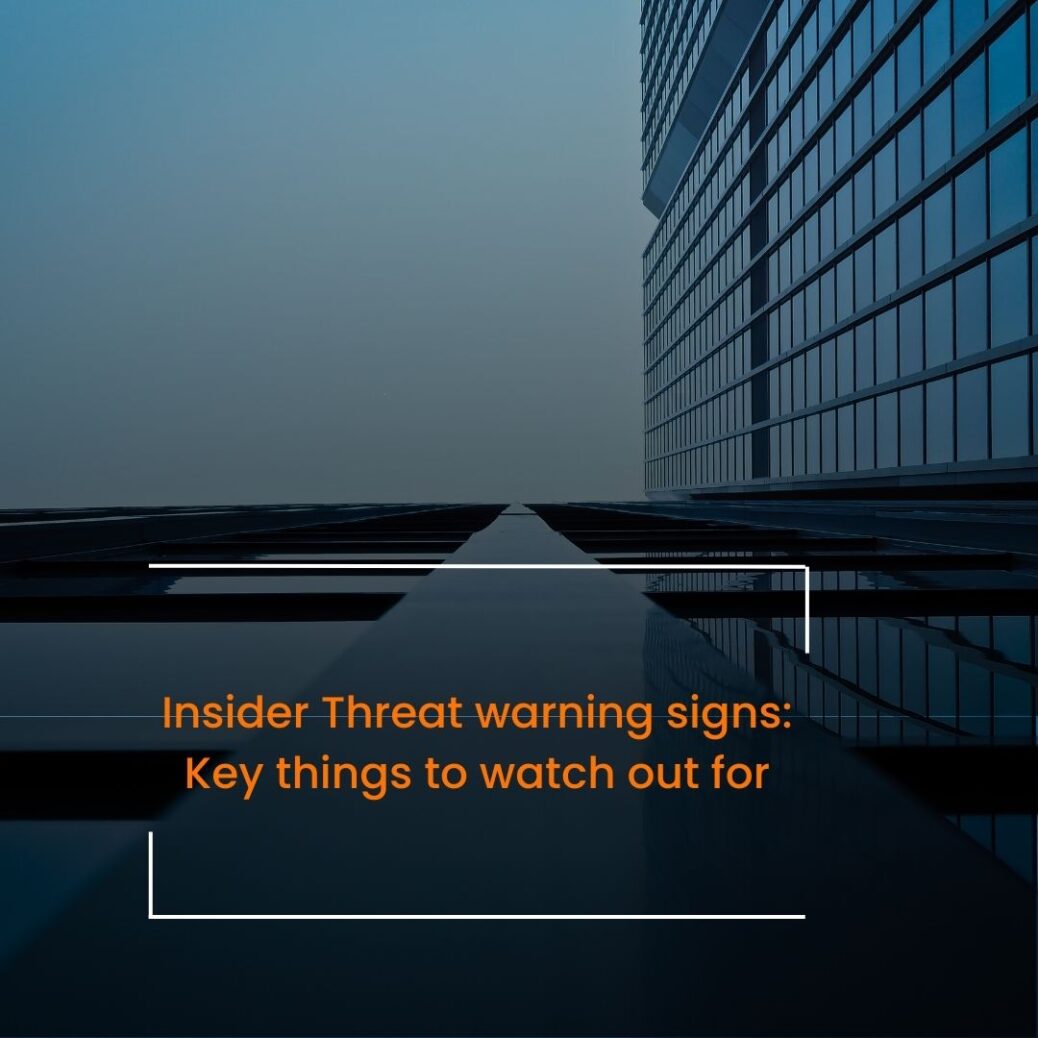Insider Threat Warning Signs: Key things to watch out for
An insider threat is someone who works for, partners with, or is somehow connected to a company and uses their position to harm it. Insider threats can jeopardize the integrity or availability of an organization’s information systems, target the confidentiality of sensitive data (as in data exfiltration), or both (as in sabotage). In enterprises of all sizes, an insider threat is a severe and expanding issue. The security of an organization can be put at risk by insider threats. Insider threat indicators are Unusual login behavior, illegal access to programmes, strange employee behavior, and privilege escalation are some apparent warning indications of an insider threat. To recognize these insider threat indicatiors and take appropriate action before a hostile insider conducts an attack, your firm must create an insider threat management program.
Table of Contents
Leading signs are typically present in malicious insiders. Pay close attention to employees who exhibit these risky habits. Insider threat management goes beyond defending national security against foreign espionage. To guard against unauthorized disclosure of sensitive information, businesses of all sizes must be vigilant about insider threat signs.
Protecting resources from these requires a sustained and coordinated effort from the enterprise. Depending on the organization, this may require the participation of multiple groups. But this is including the security team, HR team, and various business units.
An insider threat management program that proactively identifies these dangers before they can cause significant harm to your organization by paying close attention to these early warning indications may be created. In this blog, you will discover how to recognize the key signs of an insider threat. Here’s what to look out for.
Unusual Login as Insider Threat Indicator
Most user logins typically follow daily patterns that repeat themselves. Any login different from the standard routine could indicate an insider threat attempting to breach your systems. These are a few instances. Tries to log in from remote (often unconventional) locations or strange or unidentified devices. Attempts to log in at unexpected times (after work hours, on the weekends, or during holidays). Many mysteriously unsuccessful attempts to log in with the login “admin” or “test” filling up the authentication logs.
Privilege Escalation
Users with high levels of system access have access to confidential data that must be kept inside the organization. Yet, a trusted person with administrative privileges can provide additional user access. If you notice a rise in the number of people with this kind of elevated access, it may be a sign that they are freely moving around your servers in search of information to sell on the dark web. Watch out for staff members who access or attempt to access data or systems that are outside the scope of their job duties or security clearance. Another example is employees who misuse their access privileges to get sensitive data or carry out unauthorized acts.
Outrageous Downloads
Most businesses may evaluate their on-premises network or cloud architecture and identify their typical bandwidth utilization and data downloading habits. For each department, you can establish a baseline. For instance, you might discover that your HR often saves huge payroll or employee data files and that your sales staff frequently downloads sizable marketing files. These are all examples of typical behaviour. A rapid increase in data downloads. However, any of the baselines cannot account for that, may be a sign that an insider threat is present on your network.

Unusual Behaviour
Odd employee conduct can be a crucial sign of insider danger. Here are some warning signs of an incident to keep an eye out for. A worker who ordinarily gets along with co-workers starts acting differently. Sudden departure, disagreements with bosses or co-workers over policies, poor performance and lack of interest in the job, and financial gain or financial hardship that is not obvious. Be on the lookout for staff members motivated to engage in insider threat activity by external pressures or influences. Such as being solicited by rival companies, foreign agents, or other nefarious individuals.
Use of unauthorised applications
Unapproved applications, or repeated attempts to use them. These might be a sign of an insider threat since it demonstrates a worker’s willingness to flout business rules and security precautions to accomplish their objectives. This activity may indicate that an employee is trying to get unauthorized access to or alter critical data or systems. Hence, this can seriously threatens the company’s security. Workers who use illegal applications might also be more prone to engage in risky activities like downloading illegal software or disclosing private information to unknown parties. They might also be more vulnerable to social engineering scams like phishing. So this could jeopardize company security.
- Accessing Sensitive Information. Employees who access sensitive information outside of their normal duties or without authorization should be under monitoring closely.
- Unusual Network Activity. Unusual network activity, such as accessing files or systems that an employee does not normally interact with, can be a sign of insider threats.
- Violation of Policies or Procedures. Employees who regularly violate company policies or procedures may be more likely to engage in insider threats.
It’s important to note that none of these warning signs necessarily mean that an employee is engaging in insider threats. But they could indicate that further investigation is necessary. In any case, it’s important for organizations to have measures in place to monitor and prevent these threats.
Conclusion on insider threat indicators
While it is tremendously disappointing to consider that dependable current or past co-workers would try to use confidential information for their own financial advantage, it is becoming increasingly widespread. However, there are some warning indicators of this harmful activity that you can spot and address as soon as possible using the techniques. It is crucial to remember that these cautionary indicators are merely potential red flags that need additional investigation rather than sure-fire indicators of insider threat activity. To reduce the danger of insider threats, a thorough insider threat management program should combine technical controls. And the creation of policies and procedures, and personnel training.

Mosopefoluwa is a certified Cybersecurity Analyst and Technical writer. She has experience working as a Security Operations Center (SOC) Analyst with a history of creating relevant cybersecurity content for organizations and spreading security awareness. She volunteers as an Opportunities and Resources Writer with a Nigerian based NGO where she curated weekly opportunities for women. She is also a regular writer at Bora.
Her other interests are law, volunteering and women’s rights. In her free time, she enjoys spending time at the beach, watching movies or burying herself in a book.










